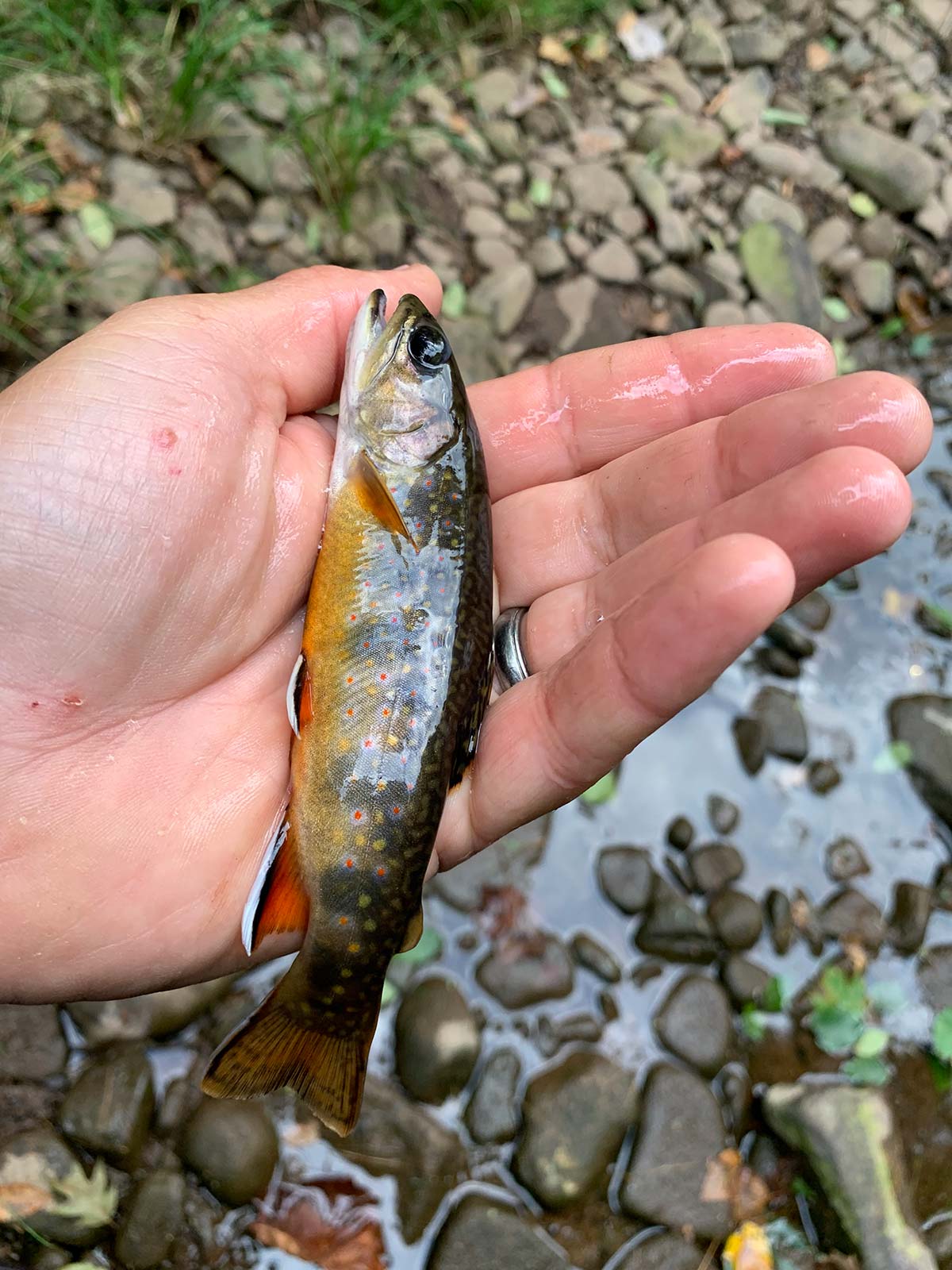
Finding and exploring waters that are rarely or never fished spurs a fulfilling satisfaction that is way above that of catching in a “community spot.” In the freshwater world, the term blue lining has become an exciting method that trout fishermen use to find new waters that are off the beaten track. The use of Google Maps, Google Earth and other online mapping services that show “blue lines” indicating water in every form on the surface of the planet have propelled this activity and vocabulary for it.
Blue line fishermen typically seek smaller creeks, brooks and thoroughfares that have largely flown under the radar by the masses. Using experience and knowledge, astute anglers make a list of potential streams that might hold native or wild trout by examining the online maps. This list of potentials is cross-checked with the state’s Class A Wild/Native trout listings to see if they have been highlighted. Additionally, print literature can play a role as trout writers may have mentioned the stream as productive or a dud. Finally, a quick internet search of the stream’s name will let one know if there’s talk about the waters on trout message boards, social media or YouTube videos.
The most serious blue liners prefer waters that are off the grid so much that there is no intel on them hence making their pursuit a true exploratory adventure. Conventional anglers hunt streams that are reasonable hikes from roads and civilization; however, there is a hardcore contingent that take it a step further. They chase trout in streams that require overnight camping deep in the forest and/or mountains.
While studying, anglers examine all the tributaries of larger flows, then they take it a step further by dissecting tributaries to the tributaries! Streams that flow in mountains, hills or valleys and are likely to have canopy-inducing cold water are worthy targets. Waters that fall from elevation are more likely to have plunge pools and small falls holding fish. Small creeks that are tucked deep in forested areas and away from easy parking and roads contain the quickest action from unpressured trout. Blue line fishing is all about finding naturally-reproducing fish as stocked trout are put in popular places since each state wants them to be caught easily by the casual fishermen, thus encouraging participation in the fishing hobby.
After choosing a blue line stream worthy of investigation, anglers have to hatch a plan. First and most obvious, they have to make sure the brook flows on public land that isn’t posted. Parking where one won’t get towed and within a reasonable walk is important. The fisherman has to find an entry point and decide if they are going to fish while hiking upstream or down.
The list of necessary items includes plenty of water, an adequate amount of terminal tackle, bug and bear spray and a satellite location device. I use the Garmin Inreach because I can text without cellular service in the event I need emergency assistance or simply won’t make it home on time. Hiking in comfortable boots and then change to waders upon arriving is wise. A back pack of necessary items goes a long way, but overpacking is a mistake because one has to lug the gear.
Whether a fly fishermen or spin, I think it’s always smart to have an extra rod and reel packed in case the primary stick falters. I carry a telescoping rod in my backpack that is about 12 inches when compacted. Furthermore, blue line streams are often overgrown on their perimeter so anglers are best to leave the lengthy rods at home in favor of short and manageable ones. Sometimes the only place one isn’t navigating shrubbery or branches is in the water itself. I sometimes wear sunglasses just to maintain the safety of my eyes!
Three-weight fly rods measuring less than 7 feet are favored. Spinning rods less than 6 feet and as short as 4-1/2 feet are prudent choices. A reasonable selection of flies or lures doesn’t take much space.
The further one dives into the wildness of each state, the opportunities to blue line exist. I can’t imagine that there’s many, if any, place that an angler has not wet a line, but in the next breath, I confidently say there exists many places that receive less to extremely little pressure. Native brook trout and wild brown trout inhabit exponentially more blue line streams than wild rainbows. Although some big fish can be caught, most blue line anglers are ecstatic to catch and admire tiny brookies briefly lifted from their home pool or riffle.
Blue line busts that will inevitably occur make the successes all the richer.




